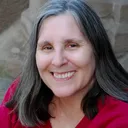Stay in the Loop
BSR publishes on a weekly schedule, with an email newsletter every Wednesday and Thursday morning. There’s no paywall, and subscribing is always free.
One artist's brain, heart, and hands
Chucho Valdés at the Annenberg Center

Maybe it’s because I’ve been reading Proust on the train, maybe it’s because I’ve been copyediting an Advanced Placement high school course on 20th-century world history — I’m pretty sure it’s not my recent binge-watch of a slew of early seasons of America’s Next Top Model — but last night, as I was listening to pianist Chucho Valdés, I felt like I really got jazz for the first time.
“Ah,” I thought. “He takes the tune apart, twists each of the pieces ever so slightly, and then puts it back together. Modernism. Cubism.”
Yes, I know, this isn’t exactly a new insight, but it’s one thing to hear this mentioned in an intellectual history class as the professor dashes past the birth of jazz on her way to Stravinsky, and it’s another to experience it directly, viscerally, as a master of Cuban jazz delivers a virtuoso solo performance.
Stripping away the inessentials
When I saw Valdés at the Merriam in 2012, he played with a full band, his Afro-Cuban Messengers, and had an opening act as well, so I was a little surprised, when we entered the Zellerbach Theatre, to see nothing but a grand piano on the stage. The format, however, allowed us to focus on the essentials: the man and his playing. With solo jazz piano, you’re hearing the music as it emerges from one artist’s brain/heart/hands — a very pure version of the artistic process.
When Valdés plays with a band — even his own band, even when it’s playing music he wrote — you’re hearing a group’s performance. As a bandleader, he’s generous and collaborative — the piano, though central to the mix, doesn’t dominate. So it’s intriguing to hear Valdés himself, not as a member of a group.
 What we heard:
What we heard:
- A meditation on the piano qua piano. Valdés went from a piece by Chopin (which I strongly suspect I should have been able to identify, but wasn’t), which he played first straight then with variations, to Dave Brubeck’s “Duke,” a tribute to Ellington, so there was one pianist’s tribute to another, to another. (It’s jazz piano all the way down!)
- A performer having a lovely time, as was his audience. For his second encore, he played a call-and-response piece in which we clapped back the rhythms he set; for his third, he played a song that those with more Spanish than I were singing along with. The audience all left the Annenberg with huge smiles on our faces; I hope Señor Valdés did as well.
What we didn’t hear, alas — undistorted sound. I don’t know if it was how the two mikes in the body of the piano were placed, or if the sound level was off in the booth, but the sound was fuzzy when Valdés was playing forte, let alone fortissimo. I would have preferred to have heard the notes more distinctly. And, not being a fan of the Keith Jarrett/Glenn Gould "warts and all" school, I would’ve been okay if we hadn’t heard his foot tapping.
Above right: Pablo Picasso, Three Musicians (© 2014 Philadelphia Museum of Art)
What, When, Where
Chucho Valdés. October 4, 2014, Annenberg Center for the Performing Arts, 3680 Walnut Street, Philadelphia. 215-898-3900 or http://www.annenbergcenter.org/.
Sign up for our newsletter
All of the week's new articles, all in one place. Sign up for the free weekly BSR newsletters, and don't miss a conversation.

 Judy Weightman
Judy Weightman